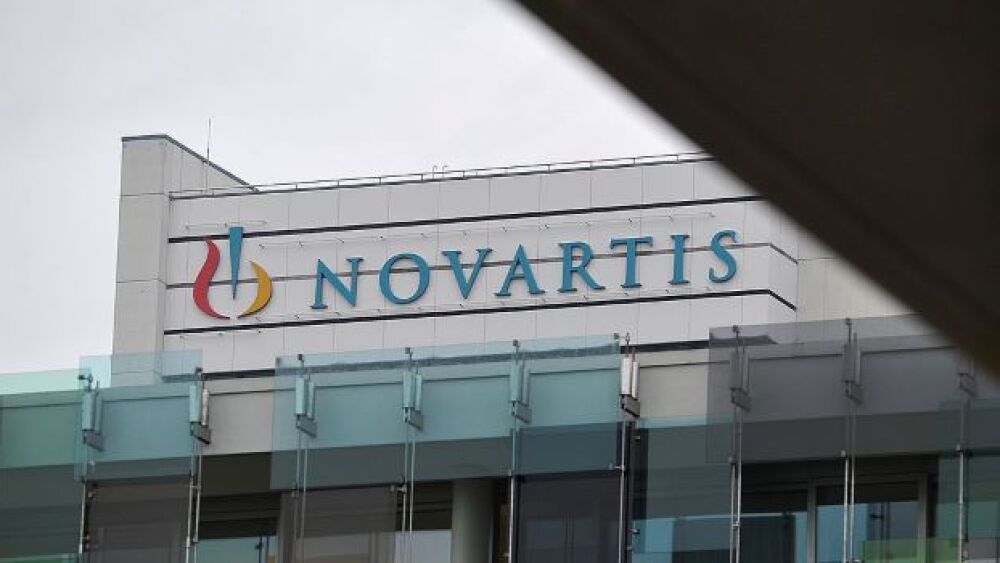Novartis reported its full-year financials this week for 2021, and overall, the news was good. Of concern, however, is the company’s Sandoz generics unit.
Harold Cunningham/Getty Images
Novartis reported its full-year financials this week for 2021, and overall, the news was good. Full-year net sales grew 4%, fourth-quarter sales were up 6% and operating income increased 13%. Of concern, however, is the company’s Sandoz generics unit. Net sales were $2.5 billion, with volume adding 11% to growth, but pricing impacting knocked off 9%. European sales were 4% and U.S. sales dropped 8%.
The company is currently running a strategic review of Sandoz with the possibility of a sale. But Novartis expects revenue for Sandoz to continue dropping in the U.S. this year, which will make it a difficult sell. The asking price is likely to be $25 billion or more, although the company has yet to decide which parts will be on the market. Insiders say part of the issue is that some of Sandoz’s production is so thoroughly tangled with other parts of Novartis’ business it can be hard just to split off products.
Richard Saynor, chief executive officer of Sandoz, provided more context, saying, “As we go into 2022, we’re seeing good growth from the rest of the world. And really, the challenge continues to be the U.S. And that’s slowly— the impact of price clearly drives the issues in the U.S., but we’re slowing stabilizing. And so really I see 2022 is a year where the rate of decline in the U.S. does stay low, but it does drag down the overall business.”
In the company’s report, Chief Executive Officer Vas Narasimhan said he would decide on Sandoz by the fourth quarter but keeping all options open in the meantime. Narasimhan told Bloomberg Television that the division has picked up “a lot of interest” from private equity firms and other generic drug companies. “We still need to see, of course, concrete proposals. It’s all in flux at the moment. We’re very much in a position of listening.”
Meanwhile, Narasimham has indicated the company is “aggressively defending each group of patents” on its cardiovascular blockbuster, Entresto. Entresto sales climbed 40% over the year. Additional growth drivers were Cosentyx, which jumped 17%, Zolgensma, which rocketed 46%, Promacta/Revolade (15%) and Kisqali (36%).
Narasimhan stated, “Novartis delivered another year of solid operational performance with mid-single-digit top-line growth, margin expansion, and strong free cash flow. Our in-market growth drivers continue to perform well across geographies, supporting our confidence in our mid and long-term growth outlook. Despite some pipeline setbacks, we delivered important innovation milestones including Entresto, 177Lu-PSMA-617, iptacopan, Kisqali, and Leqvio.”
Continuing, he said, “Looking ahead, we are focused on delivering on our pipeline and key technology platforms, which includes 20+ potential assets with significant sales, to be approved by 2026. We remain balanced in our capital allocation priorities as we continue to invest in innovation alongside returning capital to our shareholders.”
One big plus for the company is it sold its investment in Roche Holding AG for $20.7 billion. Using the proceeds and a strong Free Cash Flow, the company repaid $23.6 billion of its debt last year.
That’s the sort of combination that has investors and analysts asking the company if it plans any big mergers and acquisitions (M&A). Narasimhan basically said no when asked if the company would do a larger M&A, meaning $30 billion or larger.
“Our focus is bolt-on. Bolt-on deals, most of the deals we’ve done, as I mentioned earlier, have been sub-$1 billion upfront with payouts for the total deal value of less than $2 billion, as in recent times, including the four deals that we recently signed. And we continue to focus our energies there. We look at larger assets,” said Narasimhan.





